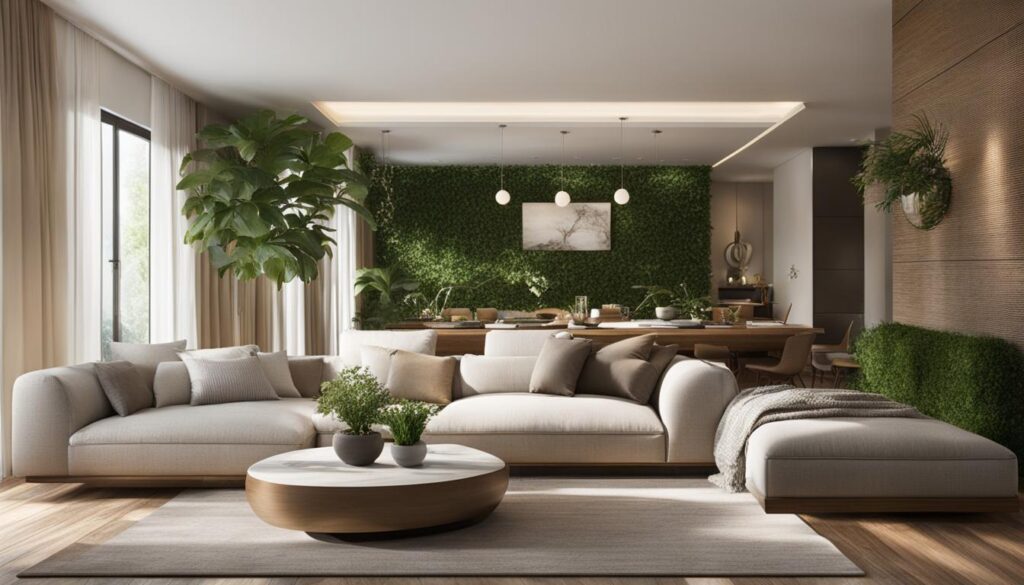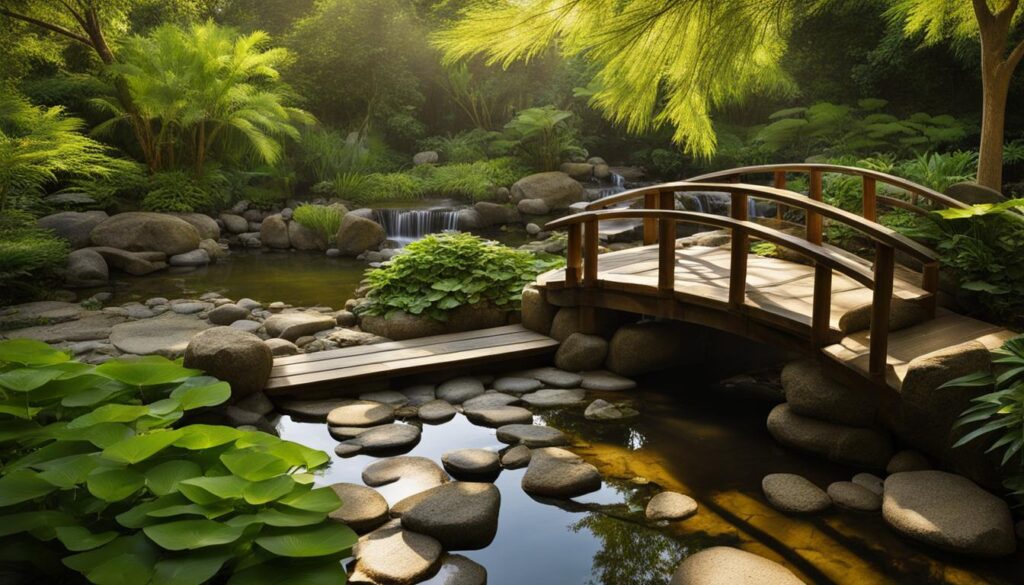Welcome to the world of Feng Shui, a philosophy that has been around for centuries and has helped people achieve balance and harmony in their living spaces. By implementing the principles of the Feng Shui Aesthetic, you can create a soulful home that not only looks beautiful but feels beautiful too. The concept of balance and harmony is at the heart of Feng Shui, as well as the energy flow that permeates through your home. By incorporating these principles into your living space, you can experience a greater sense of calm, clarity, and well-being.
Whether you’re just starting out or you’re looking to refresh your home, the Feng Shui Aesthetic can offer valuable insights and practical tips on how to create a harmonious and soulful living environment. From the placement of furniture to the use of natural elements, there are many ways to incorporate the principles of Feng Shui into your daily life.
Key Takeaways
- The Feng Shui Aesthetic emphasizes the importance of balance and harmony in your living space.
- The energy flow in your home is crucial for promoting positive vibes and overall well-being.
- Incorporating natural elements and thoughtful spatial arrangement are essential elements of the Feng Shui Aesthetic.
- The principles of Feng Shui can help you create a home that not only looks beautiful but feels beautiful too.
- By implementing the principles of Feng Shui, you can transform your living environment into a sanctuary that nurtures and uplifts your spirit.
Understanding the Feng Shui Philosophy
If you’re interested in creating a harmonious and soulful home, understanding the philosophy behind Feng Shui is essential. This ancient Chinese philosophy is based on the idea that the arrangement of our physical environment can have a profound impact on our lives. By utilizing natural elements and creating a holistic living space, you can promote balance, harmony, and well-being in your home.
The principles of Feng Shui are rooted in the idea that all things are interconnected. In your home, this means that every element, from the furniture to the decor, has an impact on the energy flow and overall feel of the space. By arranging your home in a way that promotes positive energy and eliminates negative influences, you can create a space that nurtures and supports your well-being.
Central to the philosophy of Feng Shui are the natural elements. These include water, wood, fire, earth, and metal, each of which is believed to have a specific energy that can impact your home and your life. By incorporating these elements into your home decor, you can add balance, harmony, and a sense of vitality to your living space.

Another key aspect of the Feng Shui philosophy is the concept of holistic living. This means that every aspect of your life is interconnected, including your physical environment, mental well-being, and spiritual health. By creating a living space that supports your physical and emotional needs, you can promote a sense of balance and harmony in all areas of your life.
In the next section, we will explore practical ways to incorporate the principles of Feng Shui into your home decor. By utilizing natural elements and spatial arrangement techniques, you can create a beautiful, harmonious living space that promotes positive vibes and overall well-being.
Designing an Aesthetically Pleasing Space
Now that you understand the importance of the Feng Shui Aesthetic, it’s time to focus on the practical aspect of designing an aesthetically pleasing space. Incorporating the principles of interior design can go a long way in enhancing the overall energy flow and creating a visually appealing environment.
Start by assessing the current layout and functionality of your living space. Consider the purpose of each room and how you can optimize the available space. One common mistake people make is overcrowding a room with furniture and decor. This can disrupt the natural flow of energy and create a sense of clutter and chaos.
Instead, focus on creating a balanced and harmonious environment by arranging your furniture in a way that promotes the energy flow. Incorporate natural light as much as possible to promote positivity and increase your mood. If your living room has a view, for example, arrange your furniture in a way that highlights that view. This technique will make your room feel more spacious and inviting.
Incorporating natural colors and textures is also an essential aspect of interior design when it comes to Feng Shui. Earthy tones like green, brown, and beige are ideal for creating a warm and inviting atmosphere. Add natural elements like wood, stone, and plants to further enhance the harmonious vibe.

Finally, don’t forget about the importance of spatial arrangement. For example, avoid placing the bed directly in line with the door. This position can create a sense of unease and disrupt the flow of energy. Instead, position the bed diagonally across from the door, so you have a clear view of the room while lying in bed.
By following these tips for interior design and spatial arrangement, you can optimize your living space for maximum comfort, functionality, and overall well-being.
Infusing Natural Elements in Your Home
One of the core principles of the Feng Shui Aesthetic is the incorporation of natural elements into your living space. By infusing your home with natural elements, you can promote balance and harmony, creating a space that is both visually appealing and energetically nurturing.

Plants are an excellent way to bring nature indoors and improve the air quality of your home. Consider adding a few houseplants such as peace lilies, snake plants, or bamboo palms to your living space. These plants are easy to care for and have air-purifying qualities that will enhance the overall energy flow of your home.
Another natural element that can be incorporated into your home is water. A small fountain or a tabletop waterfall can add a calming and tranquil effect to your living space. Water features can also improve the overall energy flow and promote a sense of relaxation and well-being.
In addition to plants and water features, you can also consider incorporating natural materials such as wood, stone, or clay into your home decor. These materials can add warmth and texture to your living space and create a natural, earthy aesthetic.
When incorporating natural elements into your home, it’s essential to maintain balance and harmony. Avoid cluttering your space with too many plants or water features, as this can disrupt the flow of energy. Instead, opt for a few carefully chosen natural elements that complement your existing decor and enhance the overall energy flow.
By infusing natural elements into your home, you can create a harmonious and soulful space that promotes positive vibes and overall well-being. With the principles of Feng Shui, you can transform your living environment into a sanctuary that nurtures and uplifts your spirit.
Conclusion
Congratulations on your journey towards creating a harmonious and soulful home with the Feng Shui Aesthetic! By understanding the principles of balance and harmony, natural elements, and holistic living, you can infuse positive vibes into your living space.
Remember, a Feng Shui home is not just aesthetically pleasing, but it also promotes overall well-being. By incorporating practical interior design techniques and spatial arrangement, you can enhance the energy flow and create a visually appealing space.
Don’t forget to infuse natural elements such as plants and water features to add balance and harmony to your home. By following these tips, you can transform your living environment into a sanctuary that nurtures and uplifts your spirit, promoting positivity and inner peace.
So go ahead and experiment with your home décor, and enjoy the positive transformation that the Feng Shui Aesthetic can bring!

